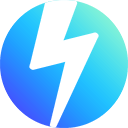Figma has become one of the most popular UI/UX design tools available today. Its vector-based editor makes it easy to design beautiful interfaces for websites, mobile apps, and more. An essential part of many UI designs is clickable buttons that allow users to take actions and navigate through an app or website.
Fortunately, Figma makes it simple to insert and customize clickable buttons that you can connect to other frames and pages in your designs. Here is a step-by-step guide to adding functional buttons to your Figma files.
Table of Contents
Inserting a Basic Button
To add a basic button to your Figma designs:
- Open the Figma file where you want to add a button. This can be a new or existing file.
- Select the Frame Tool from the left toolbar. Click within your design where you want the button placed to insert a frame.
- Adjust the Size and Shape of the frame to become your button. You can round the corners and tweak other properties in the right Design panel.
- Type Your Button Text such as “Submit” or “Learn More” within the frame you inserted. You can adjust text properties like color, size, and alignment in the Design panel.
That covers the basics of inserting a simple button! Now let’s look at making the button interactive and clickable…
Making the Button Clickable
After inserting a button frame, here is how to make it clickable:
- Name the Button Layer by double clicking “Layer” in the Layers Panel on the left and typing a descriptive name like “Submit Button.”
- Select the Button Layer in the Layers Panel to view its properties in the right-side Design panel.
- Enable Interactions by toggling on the switch next to “Interactions” in the Design panel.
- Click “Tap” to add a tap interaction. This makes the button clickable!
You can now connect your interactive button to link to other frames and pages in your Figma designs.
Connecting a Button to Other Figma Screens
The power of clickable buttons comes from connecting them to other screens and pages in your Figma file. Here is how to link your buttons:
- Create New Screens by clicking the “+” icon in the Pages Panel on the left sidebar to add new pages. Name them appropriately.
- Go Back to the Button Layer and click the dropdown next to “Tap” in the Interactions section.
- Select “Navigate To” and choose the page you want the button to link to.
That’s it! Now when you click the button, it will take you to the connected screen.
Styling Your Clickable Buttons
A key advantage of Figma is the ability to apply professional styles and effects to your buttons and other elements. Here are some quick tips for styling excellent buttons:
- Add Color Fills – Use the Fill settings in the Design panel to make colorful buttons that match your brand.
- Apply Box Shadows – Use shadows to make your buttons appear raised off the page.
- Shape Effects – Round corners, tweak borders, and experiment with other shape effects.
- Hover/Click States – Design different button styles for idle, hover, and clicked.
- Icons – Insert icons from the Assets panel to easily enhance your buttons.
Taking time to polish your buttons with styles and effects will go a long way in making impressive, professional UI/UX designs.
Prototyping Your Buttons
One fantastic feature in Figma is the ability to prototype and test your button interactions right inside the app:
- Activate Prototype Mode by clicking “Prototype” in the top toolbar.
- Click Connections to draw links between related screens and buttons.
- Interact with Your Prototype by clicking the Play button to test your interactive buttons!
Prototyping allows you to simulate real-world user flows before exporting development specs. This helps find UX issues early and saves engineering time down the road.
Exporting Your Figma Buttons
When your clickable Figma buttons are ready, you can easily export them for developers or engineers to code:
- Export PNGs – For clear visual specs of each button state.
- Generate Code – Export CSS, iOS/Android, or other code snippets.
- Share Team Libraries – Save buttons to team libraries for reuse in future projects.
- Inspect Properties – Developers can inspect exact properties in Figma’s Inspect panel.
Figma’s exports empower teams to smoothly transition designs from concept to production.
Key Takeaways
Here are some top highlights for effectively adding clickable buttons in Figma:
- Insert frame objects and add text to create basic buttons
- Make layers interactive and enable tap events
- Connect buttons to link across your design pages
- Apply styles and effects for beautiful buttons
- Prototype and test interactive flows
- Export production-ready button assets and code
With these tips, you’ll be able to add functional buttons to enhance your Figma UI and UX projects. Interactive buttons provide crucial navigation and calls-to-action in modern interfaces.
